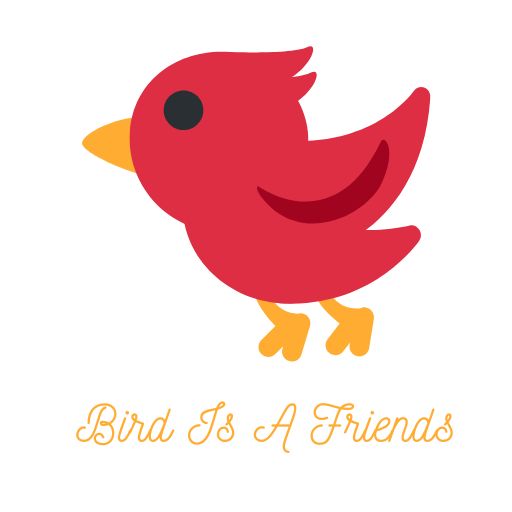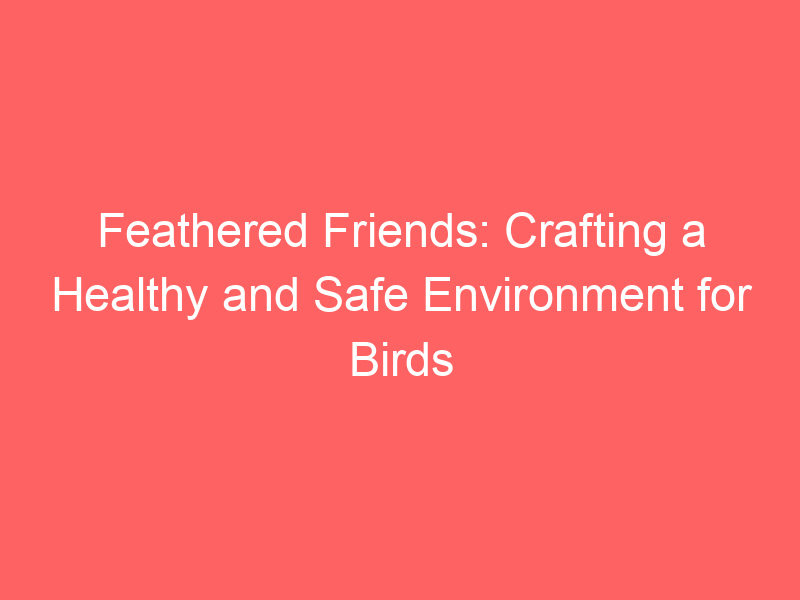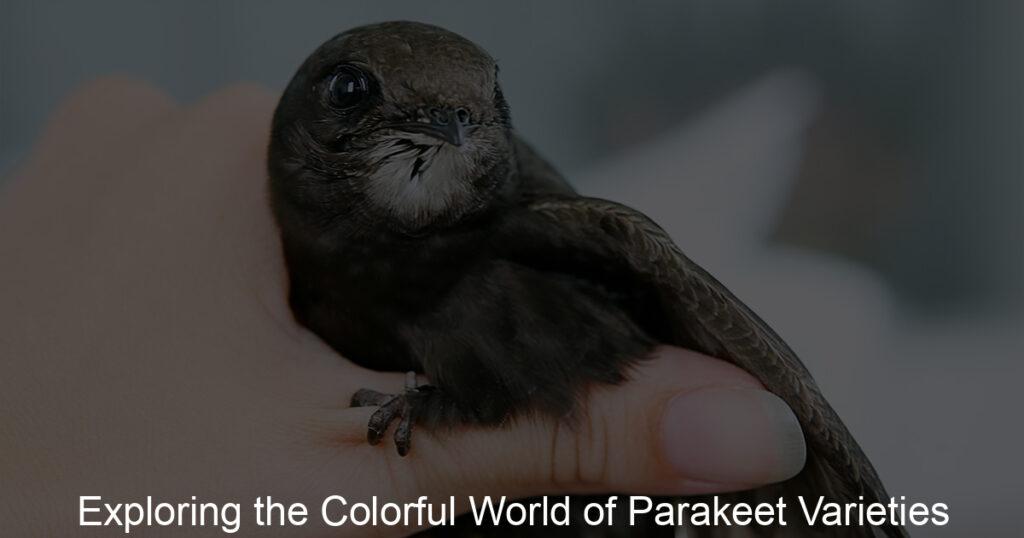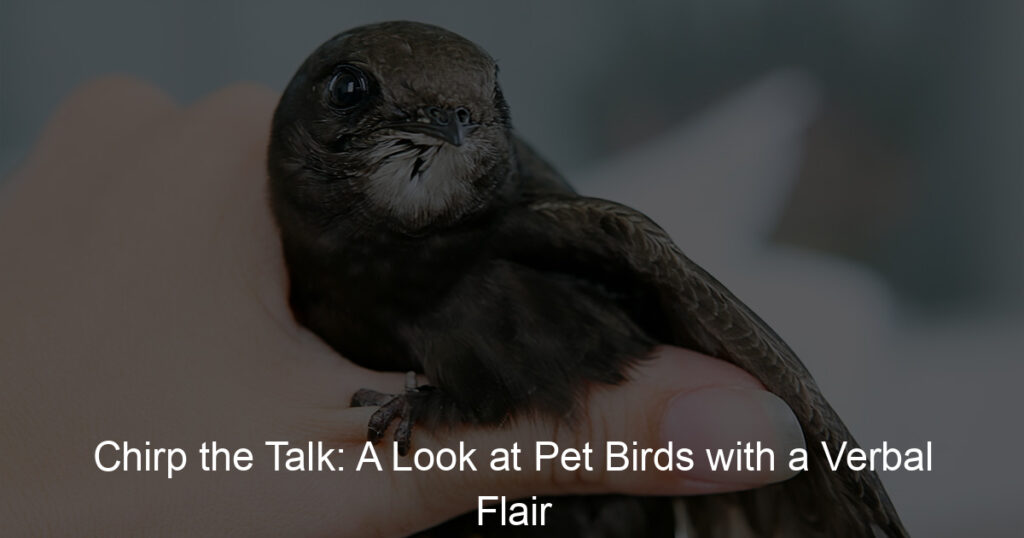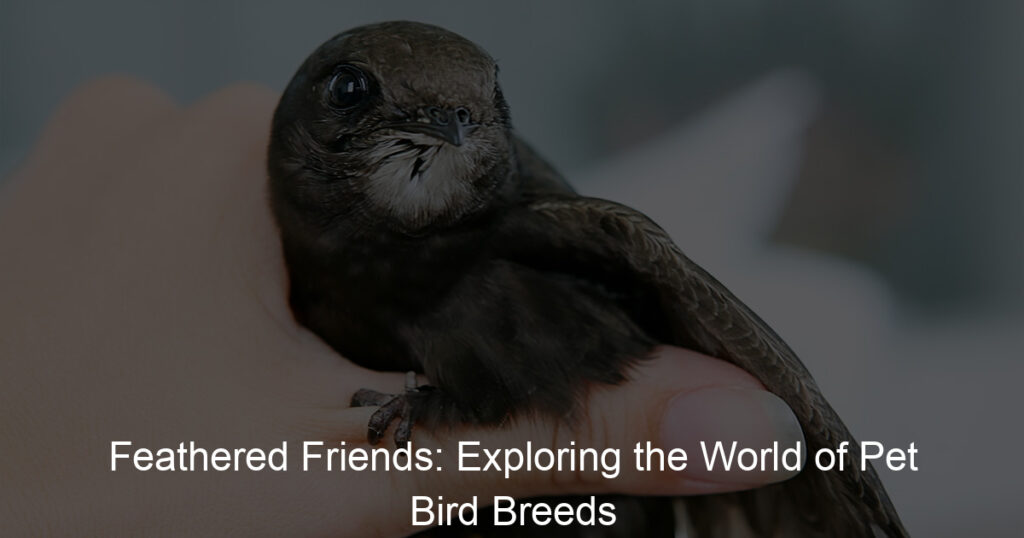
Introduction to Safe Bird Habitat
Creating a safe and healthy environment for birds is not only crucial for their survival but also contributes to the overall balance of our ecosystem. This introductory section will guide you through the importance of a safe bird habitat and the key elements that constitute a bird-friendly environment.
- Understanding the Importance of a Safe Bird Habitat
- Key Elements of a Bird-Friendly Environment
- Food: Birds need a variety of foods, including seeds, berries, insects, and nectar. Providing a diverse range of food sources can attract a wide variety of bird species.
- Water: Birds need fresh, clean water for drinking and bathing. A bird bath or a shallow dish of water can serve this purpose.
- Shelter: Birds need safe places to nest and hide from predators. Trees, shrubs, and birdhouses can provide suitable shelter.
- Safe Spaces: Birds need to feel safe from predators. Providing cover in the form of shrubs and trees, and keeping pets indoors, can help create a safe space for birds.
Providing a safe habitat for birds is more than just a noble act of kindness. It is a responsibility that we, as humans, owe to our feathered friends. Birds play a vital role in our ecosystem. They help in pollination, seed dispersal, and controlling pests. However, their habitats are under threat due to urbanization, deforestation, and climate change. By understanding the importance of a safe bird habitat, we can contribute to their survival and the overall health of our planet.
Creating a bird-friendly environment involves more than just providing food and water. It requires careful consideration of several key elements. These include:
By understanding and implementing these key elements, we can create a safe and welcoming environment for our feathered friends.
Creating a Bird-Friendly Environment
Creating a bird-friendly environment requires careful consideration and planning. The environment should be safe, comfortable, and stimulating for your feathered friend. Let’s delve into the specifics of creating an ideal indoor bird habitat.
Indoor Bird Habitat
An indoor bird habitat is more than just a cage; it is your bird’s home. It should be a safe, comfortable, and stimulating environment. Here are some key factors to consider:
- Choosing the right cage: The cage is the most important part of an indoor bird habitat. It should be large enough for your bird to move around comfortably and have plenty of room for toys, perches, and food dishes. The cage should also be made of a safe, non-toxic material. For example, stainless steel is a popular choice because it is durable and easy to clean.
- Providing adequate space: Birds need space to fly, play, and exercise. The cage should be at least twice the wingspan of your bird in width and height. Additionally, there should be enough room for toys and perches without making the cage feel crowded. Remember, a bigger cage is always better.
- Ensuring proper lighting: Birds need exposure to natural light to maintain their health. Place the cage near a window where it can get indirect sunlight. However, make sure the cage is not in direct sunlight as it can cause overheating. Also, provide a shaded area in the cage where your bird can retreat if it wants to.
Creating a bird-friendly environment is crucial for your bird’s health and happiness. By choosing the right cage, providing adequate space, and ensuring proper lighting, you can create a comfortable and stimulating indoor habitat for your bird.
Outdoor Bird Habitat
Creating a safe and friendly environment for birds outdoors is just as important as providing a suitable indoor habitat. Let’s explore two key aspects of an outdoor bird habitat: safe bird feeders and baths, and creating a bird-friendly garden.
- Safe Bird Feeders and Baths
Bird feeders and baths are essential components of an outdoor bird habitat. They not only provide food and water for the birds but also attract a variety of species to your garden. However, it’s crucial to ensure they are safe and clean.
Choose feeders with a sturdy design that can withstand different weather conditions. They should be easy to clean to prevent the spread of diseases. Bird baths should be shallow and have a rough surface to prevent the birds from slipping. It’s also important to change the water regularly to keep it fresh and clean.
| Feeder/Bath Type | Key Features |
|---|---|
| Tube Feeders | Easy to clean, suitable for small seeds |
| Platform Feeders | Attracts a wide variety of birds, easy to refill |
| Shallow Bird Baths | Safe for birds, easy to clean and refill |
- Creating a Bird-Friendly Garden
Creating a bird-friendly garden involves more than just setting up feeders and baths. It’s about creating a habitat that provides food, water, shelter, and nesting sites for birds.
Plant native trees, shrubs, and flowers to provide natural food sources and nesting sites. Provide a variety of plants to attract different bird species. Leave some areas of your garden undisturbed as many birds prefer to nest in quiet, secluded areas.
Remember, a bird-friendly garden is not just beneficial for birds, but it also adds beauty and life to your outdoor space. As the famous naturalist John James Audubon once said, “A true conservationist is a man who knows that the world is not given by his fathers, but borrowed from his children.”
Healthy Bird Habits
One of the most important aspects of maintaining a healthy bird is ensuring they have the right habits. This includes both their diet and their activities. In this section, we will focus on the dietary habits of birds.
Nutrition for Birds
Just like humans, birds need a balanced diet to stay healthy. This includes a mix of proteins, carbohydrates, and fats, as well as vitamins and minerals. Let’s delve into the specifics of a bird’s diet and how to choose the right food for them.
- Understanding Bird Diet
- Choosing the Right Bird Food
Birds have a diverse diet, depending on their species. Some birds are omnivores, eating both plants and meat, while others are strictly herbivores or carnivores. For example, parrots and finches primarily eat seeds and fruits, while eagles and hawks eat meat. It’s important to understand the specific dietary needs of your bird species to ensure they get the right nutrients.
Once you understand your bird’s dietary needs, the next step is choosing the right bird food. Commercial bird food often contains a mix of seeds, grains, and pellets, providing a balanced diet. However, it’s also important to supplement this with fresh fruits and vegetables. Avoid feeding your bird avocados, chocolate, and caffeine, as these can be toxic to them. Always consult with a vet or a bird expert when in doubt about a certain food.
In conclusion, a healthy bird diet is diverse and balanced, tailored to the specific needs of the bird species. By understanding your bird’s dietary needs and choosing the right food, you can ensure your feathered friend stays healthy and happy.
Exercise and Enrichment for Birds
Just like humans, birds also need regular exercise and mental stimulation to stay healthy and happy. Let’s explore the importance of physical activity for birds and some interactive toys and games that can enrich their lives.
- Importance of Physical Activity for Birds
Physical activity is crucial for birds. It helps them maintain a healthy weight, strengthens their muscles, and improves their overall health. Birds that don’t get enough exercise can become overweight, which can lead to a host of health problems, including heart disease and arthritis.
Exercise also helps birds to stay mentally sharp. In the wild, birds are constantly on the move, looking for food, avoiding predators, and exploring their environment. This keeps their minds active and engaged. In captivity, birds don’t have these natural stimuli, so it’s important to provide them with opportunities for physical activity and mental stimulation.
- Interactive Toys and Games for Birds
There are many toys and games available that can provide both physical exercise and mental stimulation for birds. Here are a few examples:
| Toy/Game | Description |
|---|---|
| Puzzle Toys | These toys require birds to solve a puzzle to get a reward, usually a treat. They can keep a bird mentally engaged for hours. |
| Foraging Toys | These toys mimic the process of searching for food in the wild. They can be filled with treats or bird-safe materials for the bird to explore and manipulate. |
| Exercise Wheels | These are similar to hamster wheels but designed for birds. They provide a great way for birds to get physical exercise. |
Remember, the best toys and games for your bird will depend on their species, age, and individual preferences. It’s always a good idea to provide a variety of toys and rotate them regularly to keep your bird interested and engaged.
Bird Safety Tips
Ensuring the safety of our feathered friends is a responsibility we all share. Here are some essential tips to help you keep birds safe and healthy.
-
Preventing Common Bird Injuries
Birds can get injured in various ways, including flying into windows, getting tangled in fishing lines, or eating harmful substances. To prevent these common injuries:
- Place bird feeders and baths at a safe distance from windows.
- Keep your yard clean of litter and fishing lines.
- Use bird-safe pesticides and fertilizers in your garden.
-
Protecting Birds from Predators
Birds face threats from various predators, including cats, dogs, and larger birds. To protect birds from these threats:
- Keep pet cats indoors, especially during bird nesting season.
- Place birdhouses and feeders out of reach of predators.
- Use bird-friendly netting to protect fruit trees and vegetable gardens.
-
Handling and Transporting Birds Safely
Handling birds requires care to avoid causing them stress or injury. If you need to transport a bird, it’s important to do so safely. Here are some tips:
- Always use gentle, calm movements when handling birds.
- Use a suitable carrier for transportation, ensuring it’s secure and well-ventilated.
- Keep the bird in a quiet, dark place during transport to reduce stress.
By following these safety tips, you can help create a safer environment for birds in your care and in your community.
Environment for Birds: Case Studies
Let’s dive into some real-life examples of how people have made a difference in the lives of birds. We’ll look at two case studies: creating bird-friendly environments in urban areas and successful bird rehabilitation stories.
- Creating a Bird-Friendly Environment in Urban Areas
Urban areas can be challenging for birds due to the lack of natural habitats. However, some cities have taken steps to create bird-friendly environments. Let’s take a look at a case study of New York City.
New York City has a program called ‘Bird-Safe Buildings Act’. This program aims to make buildings safer for birds by using bird-friendly materials. These materials help reduce bird collisions, which are a major cause of bird deaths in urban areas.
Since the program started, bird deaths have decreased by 90%. This shows that with the right steps, we can create a safe environment for birds even in urban areas.
- Successful Bird Rehabilitation Stories
Now, let’s look at some successful bird rehabilitation stories. These stories show how care and dedication can help injured or sick birds recover and return to their natural habitats.
One such story is of a bald eagle named ‘Freedom’. Freedom was found injured and unable to fly. She was taken to a bird rehabilitation center where she received medical care and physical therapy. After months of hard work, Freedom was able to fly again and was released back into the wild.
Another inspiring story is of a penguin named ‘Lucky’. Lucky was found with a broken wing and was taken to a rehabilitation center. After surgery and rehabilitation, Lucky was able to swim and live a normal life again.
These stories show that with the right care and dedication, we can help birds recover and thrive in their natural habitats.
| Case Study | Key Takeaway |
|---|---|
| Bird-Safe Buildings Act in New York City | Urban areas can be made bird-friendly with the right policies and materials. |
| Rehabilitation of ‘Freedom’ the bald eagle | Proper medical care and rehabilitation can help injured birds recover and return to their natural habitats. |
| Rehabilitation of ‘Lucky’ the penguin | Even birds with severe injuries can recover with the right care and dedication. |
In conclusion, these case studies show that we can create a safe and healthy environment for birds, whether in urban areas or in the wild. All it takes is awareness, care, and dedication.
Bird Care Habits
One of the most important aspects of bird care is maintaining their health. This involves regular health checks and understanding the signs of illness. Let’s delve into these aspects in more detail.
Regular Health Checks for Birds
Regular health checks are crucial in ensuring the well-being of your bird. These checks help in early detection of potential health issues, allowing for timely treatment and prevention of further complications.
- Recognizing signs of illness in birds
- Regular vet visits for birds
It’s important to be observant and familiar with your bird’s normal behavior. Any changes could be a sign of illness. Some common signs of illness in birds include loss of appetite, changes in droppings, difficulty breathing, and lethargy. If you notice any of these signs, it’s essential to seek veterinary care immediately.
Regular vet visits are an integral part of bird care. It’s recommended to have your bird checked by a vet at least once a year. These visits are not just for when your bird is sick, but also for routine check-ups and vaccinations. Regular vet visits can help detect health issues early, ensuring your bird stays healthy and happy.
In conclusion, regular health checks and recognizing signs of illness are key to maintaining your bird’s health. Remember, a healthy bird is a happy bird!
Grooming and Hygiene for Birds
Ensuring proper grooming and hygiene for your bird is crucial to its health and happiness. This involves two main aspects: proper bird grooming techniques and keeping the bird habitat clean.
- Proper Bird Grooming Techniques
Grooming your bird is not just about making it look good, but also about maintaining its health. Regular grooming helps to prevent diseases and promotes the overall well-being of your bird.
Here are some basic bird grooming techniques:
- Feather Trimming: Regularly check your bird’s feathers. If they are too long, they may need to be trimmed. Be careful not to cut the blood feathers (new feathers with blood supply). If unsure, consult a professional.
- Beak and Nail Care: Birds’ beaks and nails can overgrow, which can cause discomfort. Use a bird-safe nail clipper to trim them, or take your bird to a vet.
- Bathing: Most birds love to bathe. Provide a shallow dish of water for your bird to splash in. Bathing helps to keep their feathers clean.
- Keeping the Bird Habitat Clean
A clean habitat is essential for your bird’s health. It helps to prevent the spread of diseases and creates a comfortable living environment for your bird.
Here are some tips for keeping your bird’s habitat clean:
- Daily Cleaning: Remove any uneaten food, droppings, and dirty bedding from the cage daily.
- Weekly Cleaning: Once a week, clean the cage with bird-safe disinfectant. Rinse thoroughly and let it dry before putting your bird back in.
- Monthly Cleaning: Once a month, do a deep clean of the cage. This includes cleaning the bars, perches, and toys.
Remember, a clean and well-groomed bird is a happy and healthy bird!
Conclusion: Crafting a Healthy and Safe Environment for Birds
As we wrap up our discussion on bird care and habitat creation, it’s essential to revisit the key points we’ve covered. The health and safety of birds are paramount, and it’s our responsibility to ensure they thrive in their environments.
- Recap of key points
- Final thoughts on bird care and habitat creation
Throughout this article, we’ve emphasized the importance of creating a bird-friendly environment. This includes providing ample food, water, and shelter, as well as ensuring the habitat is safe from predators and other threats. We’ve also highlighted the significance of promoting healthy bird habits, such as regular exercise and a balanced diet.
Our discussion on bird safety tips offered practical advice on how to protect birds from common dangers. We’ve also shared case studies that illustrate how these principles can be applied in real-world scenarios.
Creating a healthy and safe environment for birds is a rewarding endeavor. It not only contributes to the well-being of our feathered friends but also enhances the biodiversity of our ecosystems. Remember, every small action counts. Whether it’s setting up a bird feeder in your backyard or advocating for bird-friendly policies in your community, your efforts can make a significant difference.
As we conclude, let’s remind ourselves of the famous quote by American author and birdwatcher, Roger Tory Peterson, “Birds are indicators of the environment. If they are in trouble, we know we’ll soon be in trouble.”
Let’s continue to strive for a world where birds can thrive, and their songs can fill our mornings with joy. Thank you for joining us on this journey of understanding and caring for our avian companions.
